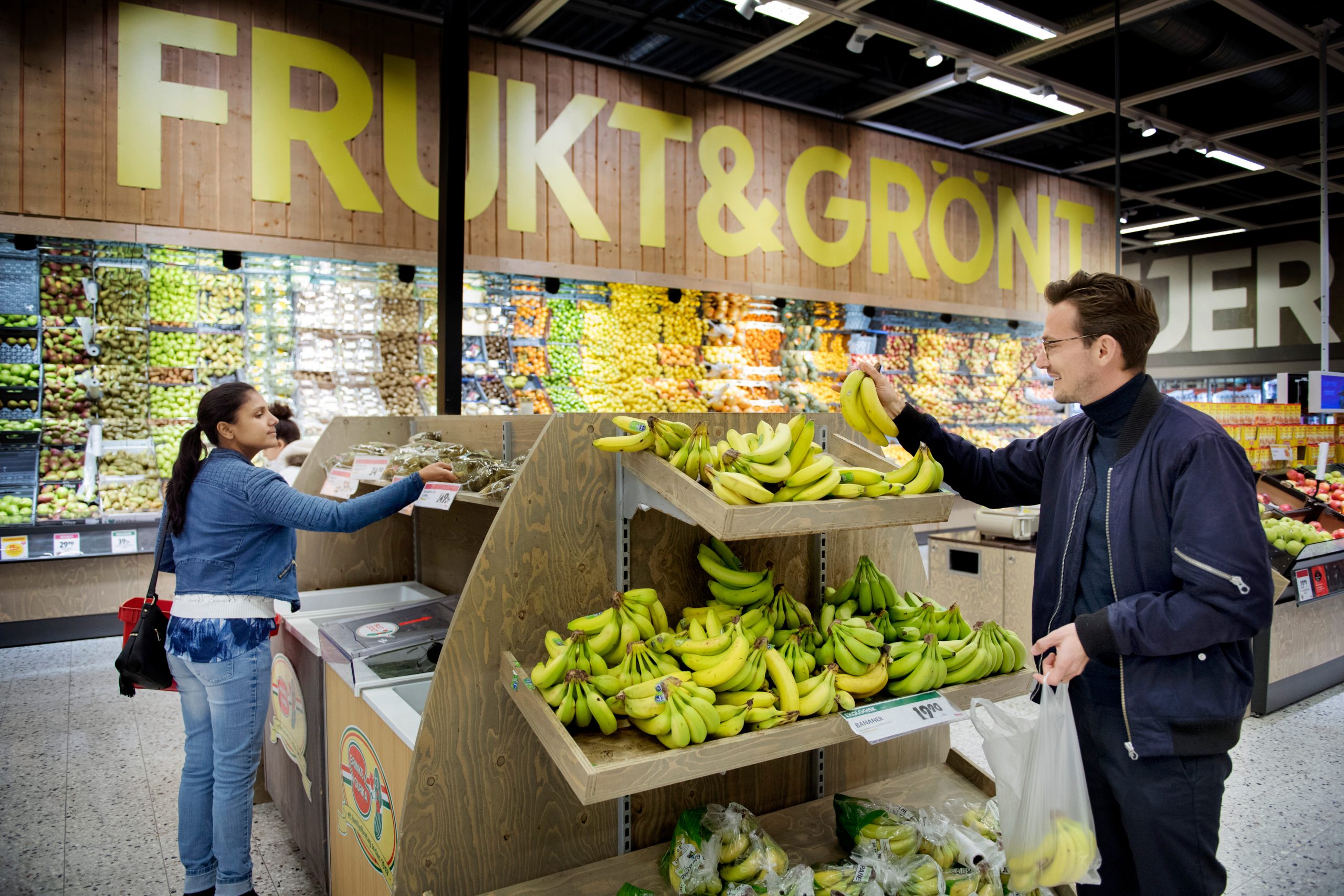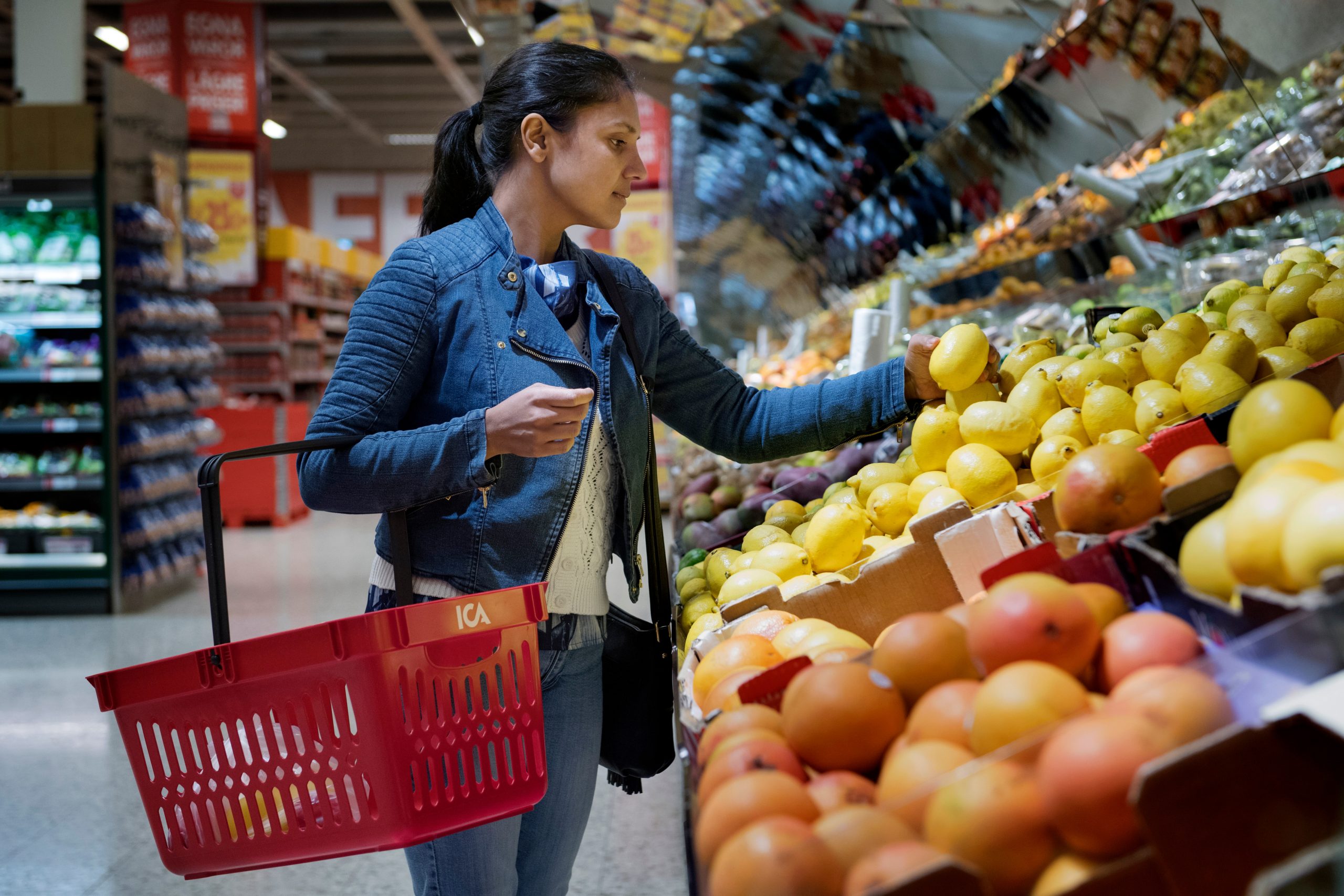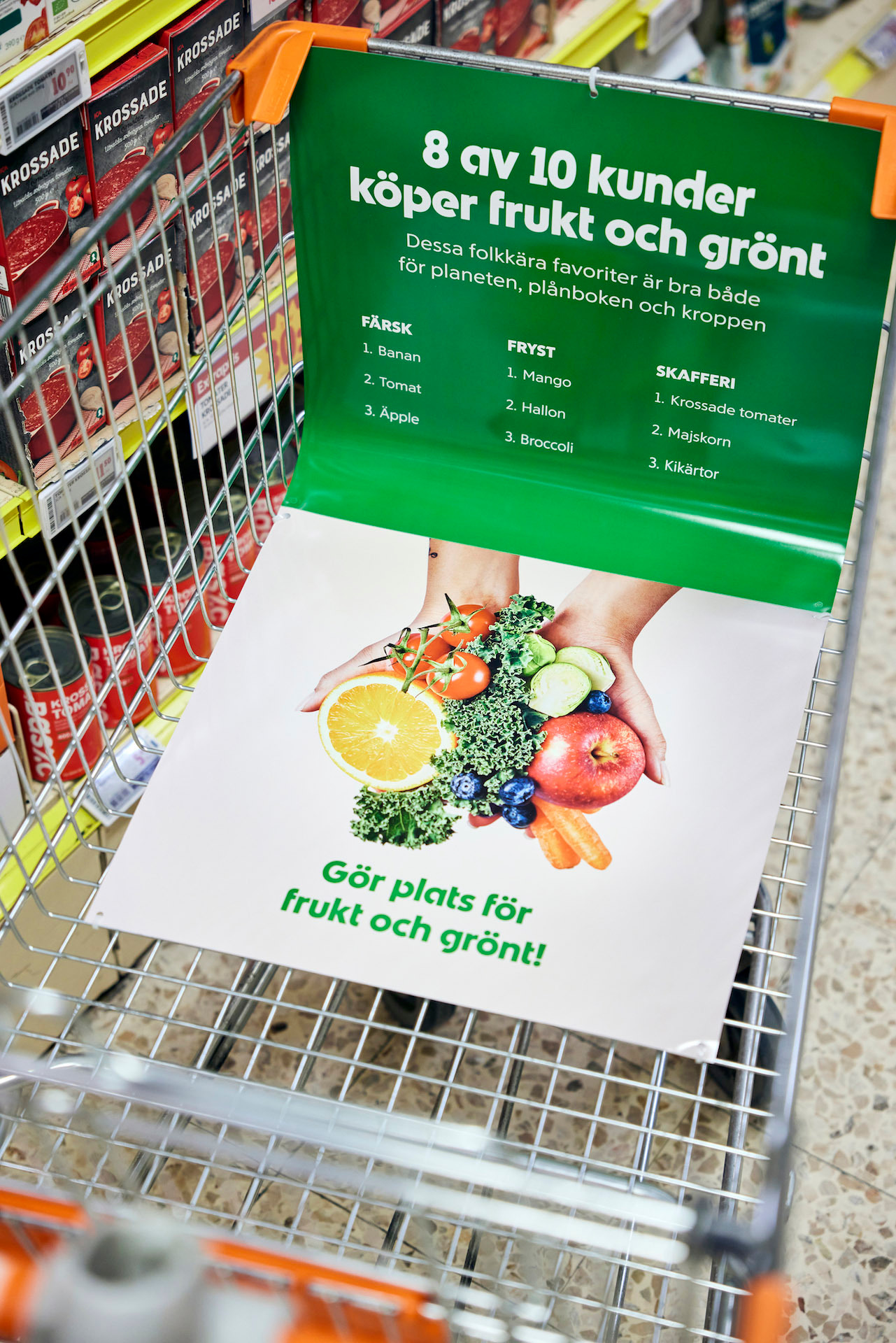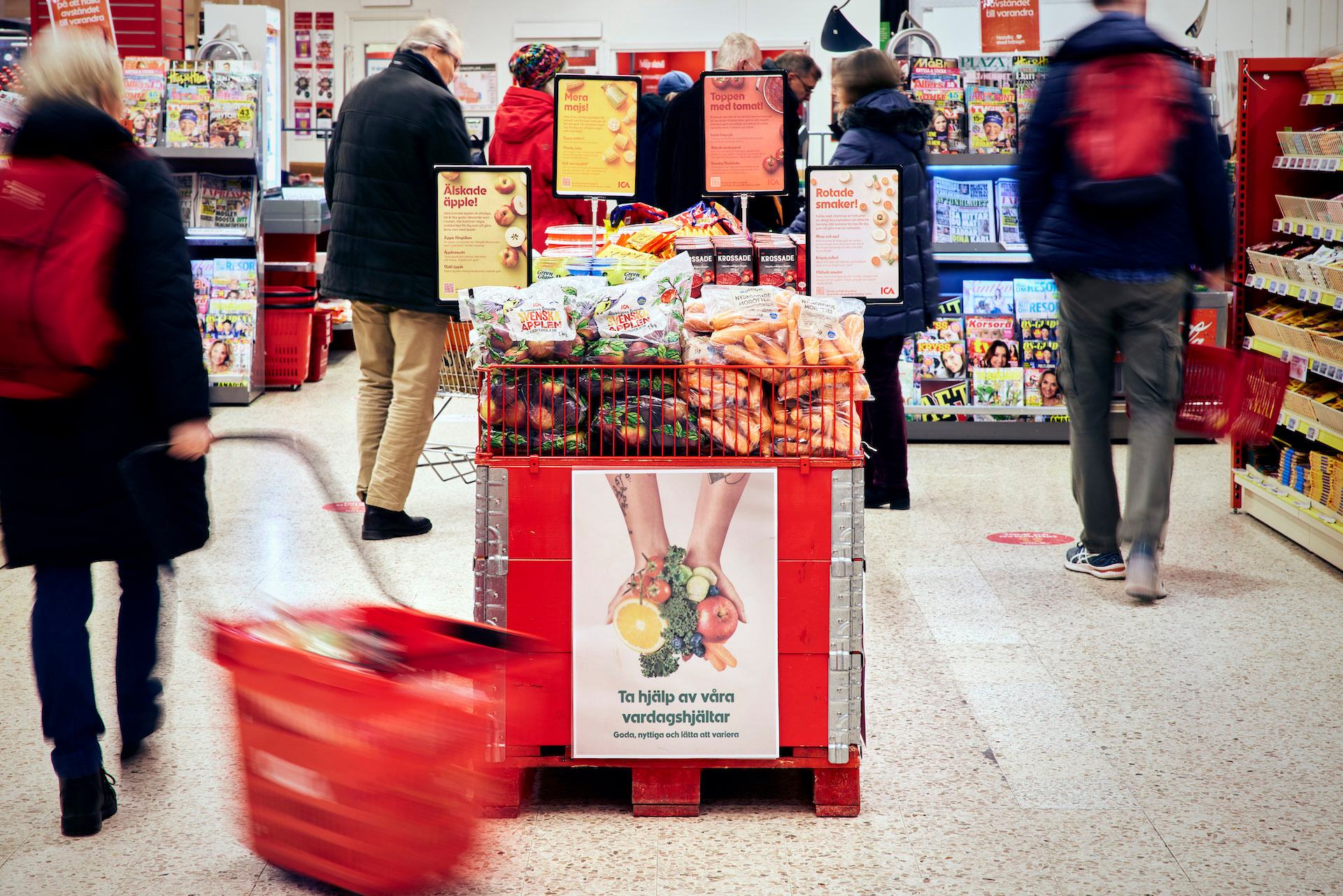ICA ‘nudging’ Swedes to buy healthier food
As the Swedish market leader – with around 1,300 stores* and a share of about 36% – ICA Sweden recognises its power to have a positive impact on people’s lives. The supermarket group is thus throwing its weight beyond a national effort to get Swedes eating more than their current average of about 360g of fruit and vegetables (F&V) daily. It has set itself the goal that, by 2025, its customers’ purchases of fruit and vegetables (including fresh, frozen and canned) will increase to a level corresponding to consumption of at least 500g per day, as recommended by Swedish authorities. That (measurable) goal is part of a new ICA group-wide health strategy and comes in the context of a country where almost every second person is overweight or even obese, there are high rates of type 2 diabetes, and 7 in 10 people eat too little fibre, according to Maria Wieloch, head of category management and business development FVF (Fruit, Vegetables and Flowers) for ICA Sweden.
It’s not enough to know what’s good for you
“We know that doing more of the same is probably not going to make us fully reach the goal,” Wieloch said at the London Produce Show in March. That’s why, since 2020, ICA has been harnessing behavioural science to drive healthier consumption. It is now sharing its experience in hopes of inspiring the industry as a whole to follow suit.
“People already know they should eat more greens, but it’s not enough to know what is good for you, it’s actually doing it,” Wieloch said.
Swedish shoppers putting sustainability before health
At the Fruit Logistica trade fair in Berlin in April, Wieloch said health surveys show Swedish consumers are starting to put the climate ahead of health in terms of factors influencing their purchases. They are also buying Swedish and regional products more often and buying less organic food, due to the higher prices. The trend towards replacing meat with fruit and vegetables has also stagnated, with less people calling themselves flexitarians, however the fruit and vegetable market is still in better shape than that for meat and dairy, she said. ICA’s 2021 annual report says other changes in customer behaviour include a permanent shift towards more e-commerce, greater demand for ready meals and meal solutions, growing polarisation between customer groups in terms of purchasing power and selection preferences, and the home as the “hub” for both work and leisure is causing change in eating habits.
*The business is operated in cooperation with independent ICA retailers. They each own and operate their own store, which makes it possible for them to tailor concepts and offers to local demand.
Examples of ICA’s behavioural interventions to address the ‘intention-action gap’:
Focus on removing barriers. Make healthier products more accessible.
- One barrier is not understanding how much 500g a day is. So in ICA’s free 2022 wall calendar for customers, there are photos of hands holding 500g of different kinds of seasonal fruit and veg. Every month there’s a different F&V theme product with relevant recipes and tips, like five surprising ways to use carrots.
- In ICA’s pre-packed family grocery box, which supplies produce for 3 meals for 4 people, bonus fruit and vegetables were added for 11 weeks. For instance, one week it was pointed cabbage, along with 5 easy ways to use it. Putting it into the food box takes away the barrier of a consumer needing to take a product home and find a recipe.
- In 1Q22, ICA launched the KLART product range of fresh ingredients ready-prepared to be sautéd, oven-roasted or fried.
Change the decision environment so it’s easier to make a better choice.
- Place things like apples, carrots, or berries at the cash register or snack section. Put convenience items like sweet potato fries in the meat section. Put broccoli or cauliflower right by the fresh pasta.
Use reminders to reduce mental effort. Provide cues to do something
- Research shows reminders are effective in driving action. ICA placed reminders in unexpected categories, such as “Don’t forget the vegetables” in the meat section, “Try some healthy snacks” in the candy section, “Add natural flavouring with berries” in the yogurt section. Other signs included “Spruce up your water with fruit and berries” and “Dare to try bean-based pasta”.
Use point-of-sale material and store signage in general
- E.g. a sign on a trolley saying “8 out of 10 customers buy fruit and veg”.








